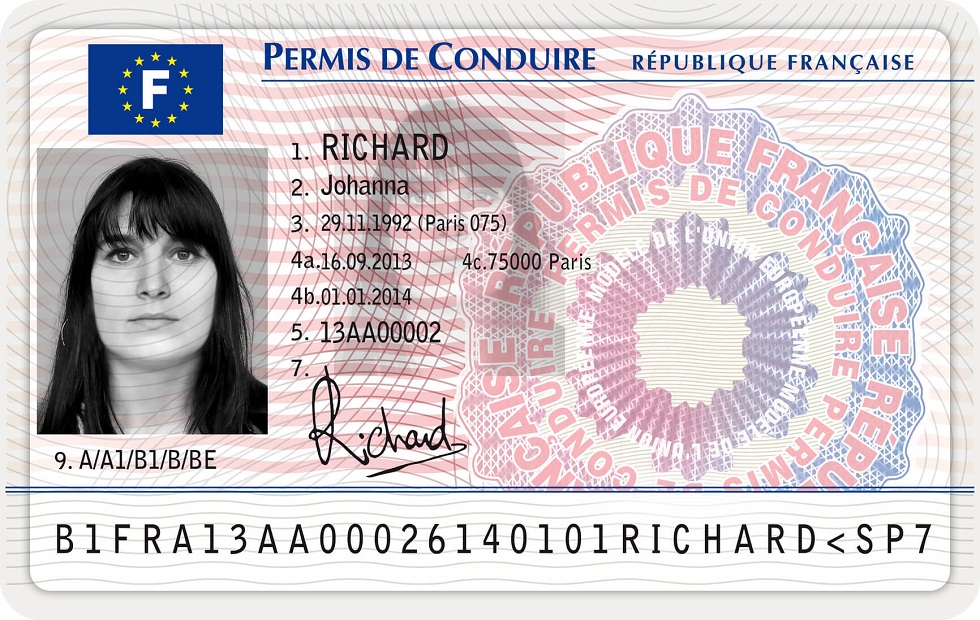
Licence France Xpress
FollowOverview
-
Founded Date March 26, 1990
-
Sectors CEO
-
Posted Jobs 0
Company Description
It’s Time To Extend Your Driving License Certificate Options
Obtaining Your Driving License Certificate
 A driving license is evidence that a person has completed a driver’s training course. This is required for all drivers under the age 18.
A driving license is evidence that a person has completed a driver’s training course. This is required for all drivers under the age 18.
 After successful completion the student will receive an official Certificate of Completion issued by the driving school and must bring it to the road test they have scheduled.
After successful completion the student will receive an official Certificate of Completion issued by the driving school and must bring it to the road test they have scheduled.
The Learner’s Permit
Achieving your learner’s license is a key step in the journey to becoming a safe driver. This procedure requires patience, dedication and a good deal of preparation. The best way to prepare is by studying the New York State Driver’s Manual thoroughly. The manual includes helpful study guides and practice tests. These can help you identify areas in which you need more focus and will help you get ready to pass the written test.
You will be granted a temporary permit upon passing the written test. This will require you to visit a NYS DMV to fill out. However you can complete the form by downloading the forms from the DMV’s website. This will help make your in-person visit much quicker.
You will be asked to provide a signature on the form, which is usually Form MV-44. If you are not 18 years of age You will require an adult or parent to sign the form in addition to the required documents. If you are over 18, you can apply without parental permission having completed a certified driver’s education program.
The learner’s license will have restrictions, including the requirement that you be accompanied by an experienced driver who meets all requirements for age, licence and relationship. You are restricted in the hours you drive and with passengers. Once you have had your license for a period of six months you’ll be able to apply for a junior license.
It is crucial to practice with your supervisory drivers as often as possible when you have a learner’s permit. This will help you gain confidence behind the wheel and enhance your driving skills. Make sure you record your hours of practice, as you will need to provide these when applying for your license.
The Written Test
The test is a multiple-choice test on the driving laws and regulations administered by the Department of Motor Vehicles of the state government. This test evaluates the driver’s understanding and knowledge of traffic rules.
In the case of a state, it may include questions about right-of-way regulations intersections, right-of-way rules, and even specific vehicles. It’s best to be aware of all these topics so you can pass the written test and receive your driver’s license.
If you’re not sure about these concepts You can take test-taking online or in books to help you prepare for the test. These materials are often cheap or free and have a similar format to the official test. They could make the difference between passing or failing the written test.
Be sure to have a restful night’s sleep, eat a healthy diet, and bring all necessary documents (e.g. proof of insurance or driving license) to the test. Be sure to set aside sufficient time as per your invitation letter to reach the examination site before the scheduled appointment.
When you get to the DMV You may be waiting just Permis a – Permis A2 few minutes until they call your name. It is a great time to listen to your favorite tune, meditate, or have an energizing snack. Taking the test in an excited and nervous condition can increase your chance of failing So, it’s a good idea to remain as calm as you can when you enter the testing area.
When your name is called, they will bring you into the testing area and give you a written test (which is actually a computerized one). When you’re done with it the test, they either inform you that you passed or invite you to return to take the test again.
To pass the written test, you need to study the New York State driver’s manual thoroughly and to pay special attention to the sections that deal with subjects commonly tested on the written exam. In general any information you learn from the manual could be used to answer questions during the test. Read the manual and practice the tests without skipping any sections.
The Vision Test
A person with poor vision isn’t able to drive safely. This is the reason why one must undergo an eye exam before they can get their license. The state uses various tests to assess the sharpness of someone’s vision. The state could use a standard test called the Snellen Chart, which displays rows of symbols or letters that shrink. The person’s visual acuity is determined by the smallest number of rows they are able to comprehend.
This is the most commonly used method by which a person’s vision is tested. It’s used to determine how clear their vision is and if they need glasses or contact lenses to see clearly.
The person is asked to take off their glasses or contact lenses and sit or stand approximately 20 feet (6 metres) away from the chart. They keep both their eyes open while reading the lines of letters or symbols.
The next test is the visual field test, which measures the amount of peripheral (side) vision a person has. This can reveal blind spots that are caused by eye diseases or brain disorders like glaucoma. The doctor might hold different numbers of fingers across different areas of peripheral vision to see how many they can see.
Applanation tonometry is yet another test that a doctor may administer. This measures intraocular tension. This can detect glaucoma and other eye issues by measuring the fluid pressure in the eye.
If a person’s vision is sufficient, their eye doctor will issue a certificate which must be presented to the state in order to obtain a license. If their vision is not good and they are unable to see, they may be granted restrictions such as “DAYLIGHT ONLY” and must remove it by submitting a new vision report to the State.
Vision screenings are usually performed at schools and as part of routine physical exams by primary care physicians. Local health fairs, sponsored by hospitals and social service agencies as well as fraternal organizations like the Elks or Lions clubs are another location where they are often done. These screenings can identify certain eye issues, but they could also miss many of them. Everyone should undergo a complete eye exam by an ophthalmologist every 2 years.
The Road Test
The road test is designed to evaluate your ability to drive in a vehicle and adhere to traffic laws. You’ll be asked to perform several maneuvers including parallel parking and changing lanes. It’s essential to practice these skills prior to the test to ensure that you’ll be able to pass.
The examiner will check your vehicle before you begin the test to make sure it is safe to drive. He or she will make sure that all the lights and signals are working and that the windshield is clear and that you are able to see out of the front and rear of the vehicle.
If the examiner determines that your car unfit to drive then he/she will reschedule the remainder of the test and you’ll need to schedule another test later. Be prepared with all required documents to avoid delays. Typically, you’ll have to provide the same documents you used for your permit, however, you should always check with your local DMV office to verify the specific requirements.
Once you’re ready to take the test, you can do it on the internet or in person at the DMV office. Be aware that there’s typically waiting time before you can schedule your test, especially when you book it through the DMV. Some driving schools offer additional services, like arranging your road test appointment for you.
Before the test begins, the evaluator will explain the basic features of the car and ask you if you have any questions. You’ll then drive the car along a familiar route. Be sure to adhere to the speed limit and be aware of any signs or markings posted. You will be asked to use turn signals, leave some space between your vehicle and other vehicles, and accelerate and brake lightly. You may be asked to do a three-point turn or change lanes. Practice these moves beforehand to ensure you’re confident when you take the test.
The Safety Specialist will issue your examination permit once you’ve completed the road test and will issue an indication of when you can obtain your driver’s license. Make sure you bring your ID and proof of insurance and also a valid learner’s permit (if you already have one). If you failed the road test, you’ll have to wait at least a day before you can retake the test.